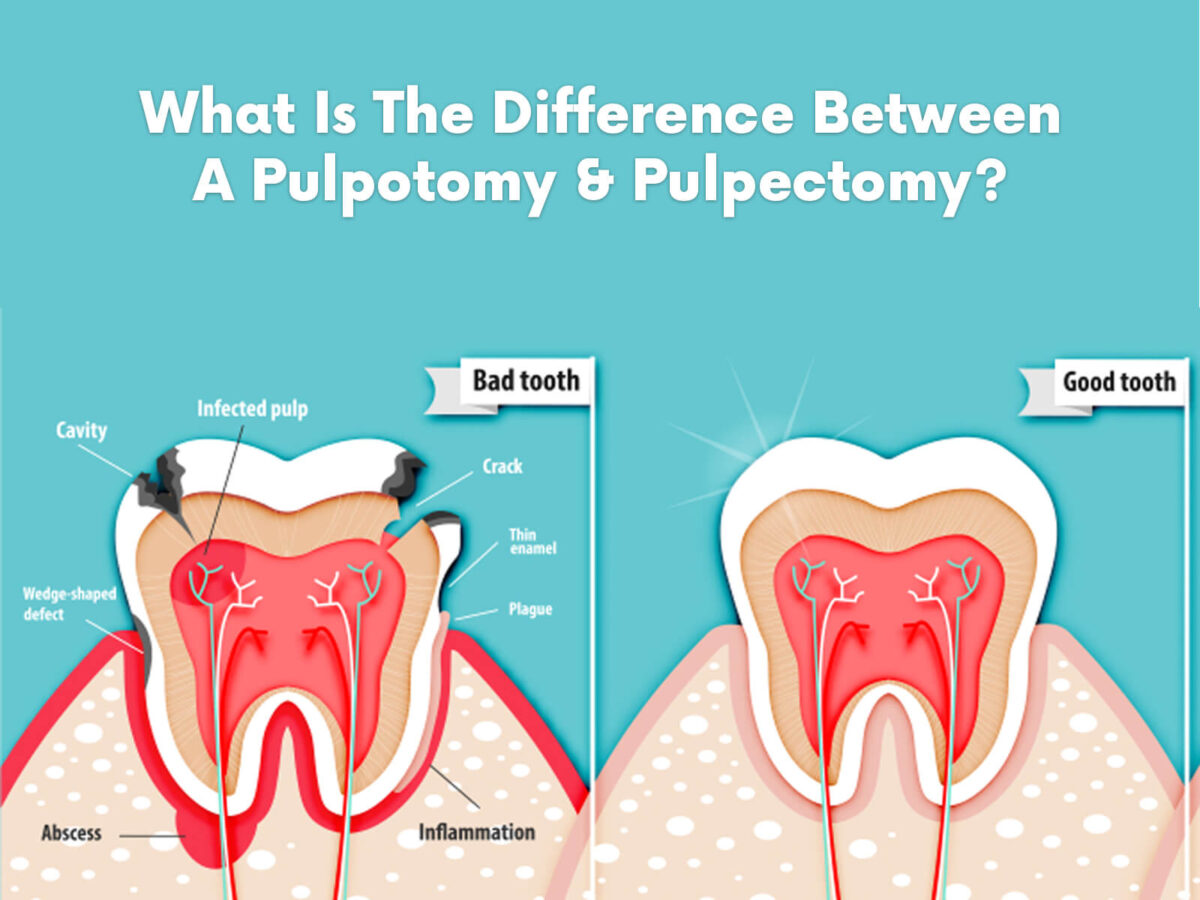Blog
Dental hygiene tips for healthy teeth & gums

What Is The Difference Between A Pulpotomy & Pulpectomy?
To keep your mouth healthy, you should brush and floss your teeth every day and fix any issues with your teeth right away. Even so, a small hole can lead to tooth decay. Procedures such as pulpotomy and pulpectomy are often used to treat cavities or infections in the pulp cells of the tooth.
Different people can benefit from them, and they can be used to treat different dental issues. People getting any of these two dental treatments need to know how they are different from each other.
This article will discuss pulpotomy and pulpectomy and how they are used in dentistry. It will also show how the two procedures are alike yet different.
Pulpotomy
This dental procedure is usually only done on deciduous teeth (baby teeth) that have been badly damaged or decayed but still be saved. This method keeps the healthy pulp tissue inside the tooth’s root canals.
Also, it removes the unhealthy or infected pulp from the top of the tooth. People often think of it as a partial root canal treatment because the goal is to protect the tooth’s structure and stop the infection from spreading.
Procedure:
- The dentist will use local anesthesia to numb the area around the tooth and any other sensitive tissues to ensure the patient’s comfort during the procedure.
- The dentist makes a very small hole in the tooth’s crown to access the pulp area and remove it. Special tools are used to remove any swollen tissue from the pulp chamber carefully.
- After the pulp tissue has been taken out, the space is filled with a medicated substance, which is usually a type of dental cement. This substance helps in healing and stops germs from growing.
- The last step in repair is to fill the tooth’s access hole. This stops further decay and restores the tooth’s structure.
- After the root canals have been cleaned and scrubbed, they are sealed with a biocompatible material like gutta-percha, which prevents them from getting dirty again.
Pulpotomy may be a choice for teeth that can still be saved because the infection or decay hasn’t reached the root canals. People usually need this surgery because they have deep holes, broken teeth, or exposed pulp.
Pulpectomy
The more complicated pulpectomy removes all of the unhealthy or dead pulp tissue from the crown and root canals of the tooth. This treatment is usually done on adult teeth to stop tooth decay or damage that has reached the root canal system.
Procedure:
- In a pulpotomy, the tooth and surrounding tissues are numbed with local anesthesia.
- The dentist can clean the pulp area and root canals by making a hole in the tooth’s crown. Using special tools, the whole root canal system is carefully cleaned of dead pulp tissue.
- An important part of the disinfection process is cleaning and shaping the root canals to get rid of germs and dirt that can cause infections.
- Antimicrobial treatments can be used to kill any germs that are still in the tubes after they have been cleaned.
- Filling the cleaned and sanitized root canals with a biocompatible material, like gutta-percha, seals them and stops them from getting contaminated again.
- When a tooth is being fixed, the last step is to fix the entry hole and then put a dental crown on top of it. It will make the tooth strong, work properly, and look good again.
If the pulp dies or becomes infected around the root of the tooth, it means that the infection or decay has spread to the root canal system, and a pulpectomy is needed. It is a common way to ease the pain and suffering caused by tooth infections.
Differences Between Pulpotomy & Pulpectomy
- When you do a pulpotomy, you remove inflamed or sick pulp tissue from the crown of the tooth. When you do a pulpectomy, you remove all the pulp tissue from the tooth, including the root canals.
- The goal of pulpotomy is to keep the tooth alive and prevent the infection from spreading. The goal of pulpectomy is to treat the infection in the root canal system of badly damaged permanent teeth so that the teeth don’t need to be pulled out.
- Pulpotomy is easier and less invasive than pulpectomy, which is more thorough and acts more like a full root canal.
Both pulpotomy and pulpectomy are used to stop tooth decay and prevent cavities from worsening. At Elgin Dentist TX, you can talk to a trained dentist about what kind of dental care will work best for you.


